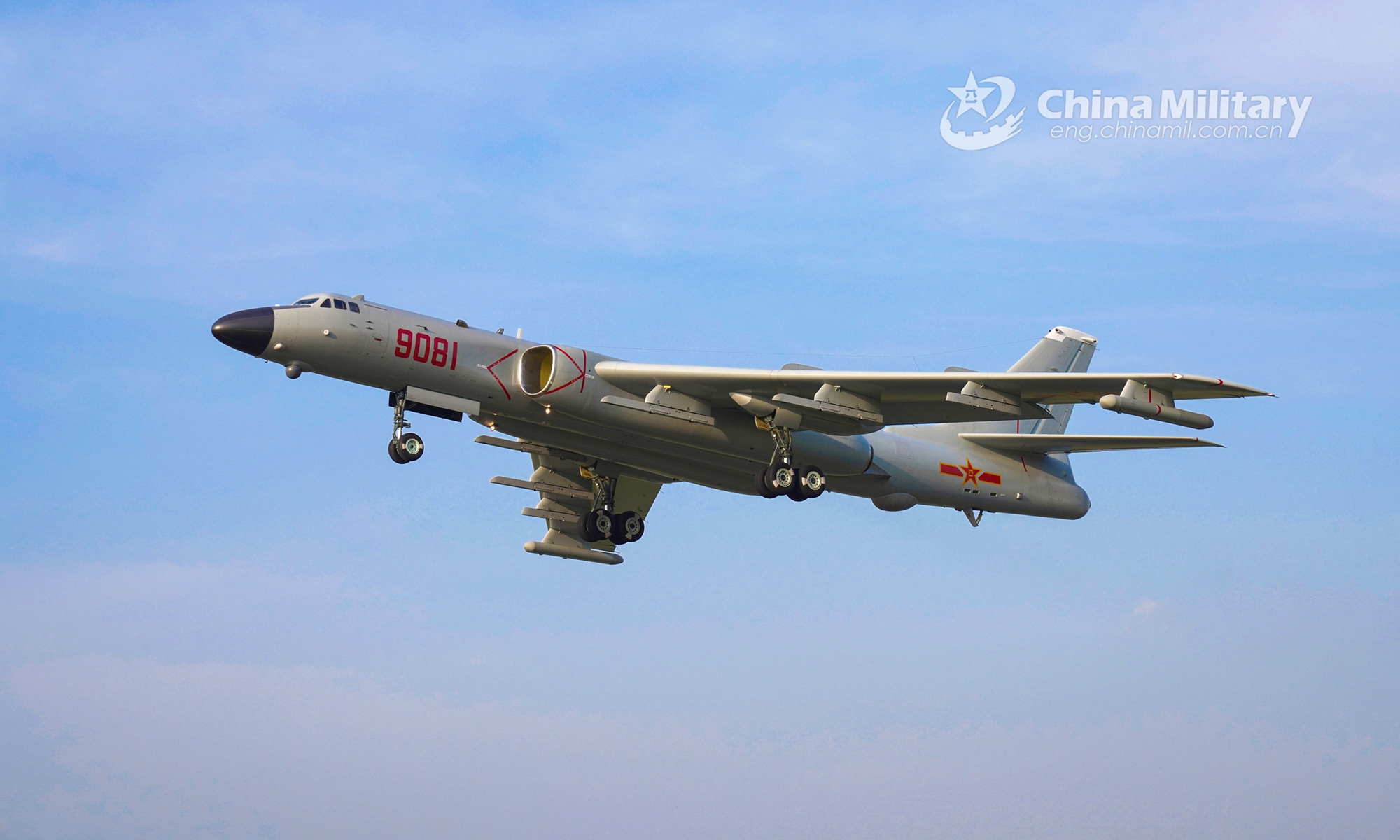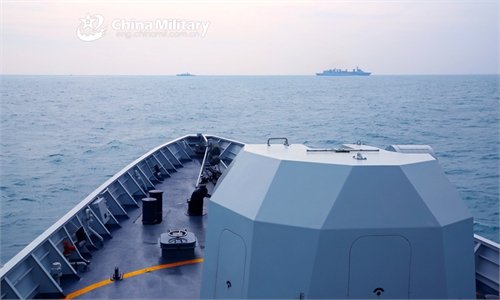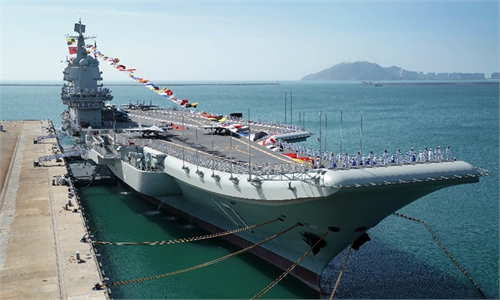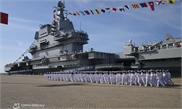China, Russia hold second joint aerial strategic patrol, which could become ‘routine’

A H-6 strategic bomber attached to a bomber regiment of the naval aviation force under the PLA Southern Theater Command takes off for a recent realistic flight training exercise. (eng.chinamil.com.cn/Photo by Gao Hongwei)
The air forces of China and Russia held the second joint aerial strategic patrol in the Asia-Pacific region on Tuesday, the two countries' defense ministries simultaneously announced on the day, following the first one in 2019.
This means the China-Russia joint aerial strategic patrol will become routine in the future, Chinese experts said.
China sent four H-6K bombers and Russia sent two Tu-95 bombers, as the warplanes formed a formation and patrolled the Sea of Japan and the East China Sea, reads a statement released by the Chinese Ministry of National Defense on Tuesday.
During the flight, both countries' warplanes followed articles in international law and did not enter airspace of another country, the statement said, noting that the mission is a scheduled event in China and Russia's annual military cooperation plan, and is not aimed at a third party.
The first such joint aerial strategic patrol took place on July 23, 2019, in which China sent two H-6Ks and Russia sent two Tu-95s, which jointly patrolled the Sea of Japan and the East China Sea.
As the COVID-19 pandemic ravages the world, the patrol shows China and Russia's strategic trust and cooperation has made another step forward to allow the second joint aerial strategic patrol to proceed as planned, analysts said.
The fact that both two strategic patrols chose the Sea of Japan and the East China Sea indicated that China and Russia have constant and common concerns on the strategic stability in these regions, a Chinese analyst told the Global Times on Tuesday on the condition of anonymity.
For Russia, conducting aerial strategic patrols over the open seas is very common, not so for China. But as China is facing increasing security risks and the Chinese People's Liberation Army (PLA) Air Force is becoming more capable, China's long-range strategic patrols will also gradually become more frequent, which is a common practice among major powers and is in line with international law, the analyst said.
China increased the number of H-6Ks from two to four for this year's joint patrol, a sign of the increasing capability of the PLA Air Force, said Fu Qianshao, a Chinese military aviation expert.
As more joint patrols are set in the future, the scale of these patrols could increase, and more types of aircraft, including aerial tankers that could extend the range of other participating aircraft, Fu said, noting that the PLA has conducted strategic patrols on its own, and conducting joint patrols with Russia will further improve its capability in high seas, honing the ability to safeguard maritime interests and national and regional security.
Fu said that only three countries now operate long-range strategic bombers. The other is the US. China and Russia's joint strategic patrols will contribute to mutual trust, and the two sides can learn to deal with regional security situations together.
The joint aerial strategic patrols are arranged to further develop the China-Russia comprehensive strategic partnership of coordination for a new era, enhance the strategic cooperation level and joint operation capability of the two countries' militaries, and safeguard the global strategic stability, the Chinese Defense Ministry said in the statement.
Joint aerial patrols by strategic bombers used to be rare, but as they become more frequent in the future, the world will get used to it, Fu said.




